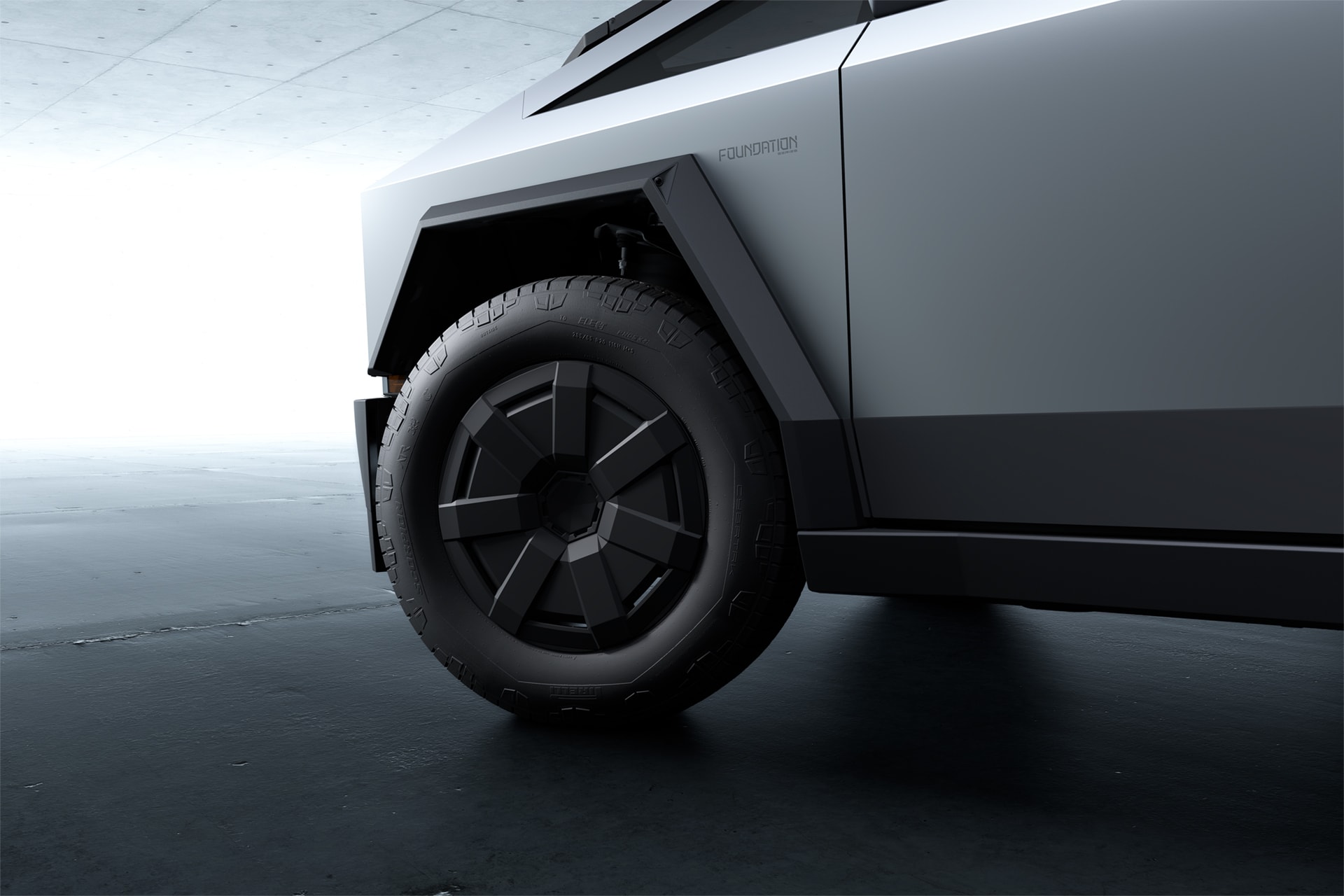Amidst the multiple fires that have forced an estimated 150,000 people to evacuate, caused fatalities and burned down a significant amount of property, Elon Musk, Tesla and others have shared a few of the relief efforts the company has undertaken.
Musk noted that the companies are utilizing the Cybertruck and Starlink to aid both authorities and evacuees, while others have shared their experiences using the company’s products to keep the lights on, evacuate and more.
Here are a few of the relief efforts Tesla and Musk have put in place, as well as experiences from some of the company’s customers.
Some Tesla Cybertruck deliveries paused to prioritize relief efforts, Starlink offers free service
On Sunday, Musk said on X that some Cybertruck orders would be delayed due to the company using them for relief efforts, in addition to a few other measures the company has announced in the past few days in efforts to help those affected by the fires. The CEO wrote the following message in the afternoon:
Apologies to those expecting Cybertruck deliveries in California over the next few days.
We need to use those trucks as mobile base stations to provide power to Starlink Internet terminals in areas of LA without connectivity.
A new truck will be delivered end of week.
In a follow-up post, Musk added:
We are going to position Cybertrucks with Starlinks and free WiFi in a grid pattern in the areas that most need it in the greater LA/Malibu area
After the posts, multiple users reached out to Teslarati requesting some of these support Cybertrucks in Pasadena. We asked Musk if it would be possible for victims to request help in certain areas, in addition to those he mentioned previously, though he hasn’t yet responded to whether this area will be covered at the time of writing.
Hey @elonmusk, we’ve gotten a few folks in Pasadena who are in need as well.
Is there a way you or @Tesla could set up a way for victims to request help in certain areas of LA? 🙏 https://t.co/2WkaChSfmW
— TESLARATI (@Teslarati) January 12, 2025
In an email that was sent to Starlink customers last week that was seen by Teslarati, SpaceX announced that it was temporarily providing one month of free Starlink service to customers, writing that it was being proactively added to accounts without requiring anything from the consumer. Musk followed up and echoed the sentiment on Wednesday.
“SpaceX will provide free Starlink terminals to affected areas in LA tomorrow morning,” he he wrote.
Tesla donates Cybertrucks to be used as battery banks in Altadena
Along with deploying Cybertrucks equipped with SpaceX’s Starlink satellite internet over the weekend and SpaceX making the service free, Tesla also donated some of the electric trucks to be used to power buildings for authorities involved in fighting the fire, as was highlighted on Saturday. In a post on Instagram, the Altadena Mountain Rescue account shared photos of a few Cybertrucks in a parking lot, saying that they were being used as battery banks amid outages.
The account writes:
A donation of Cyber Trucks from Tesla Motors to be utilized as battery banks at the station until power is restored to the station.
This will greatly help the team to power radios, computers and lights as we work into the dark.
Credit: Altadena Mountain Rescue | Instagram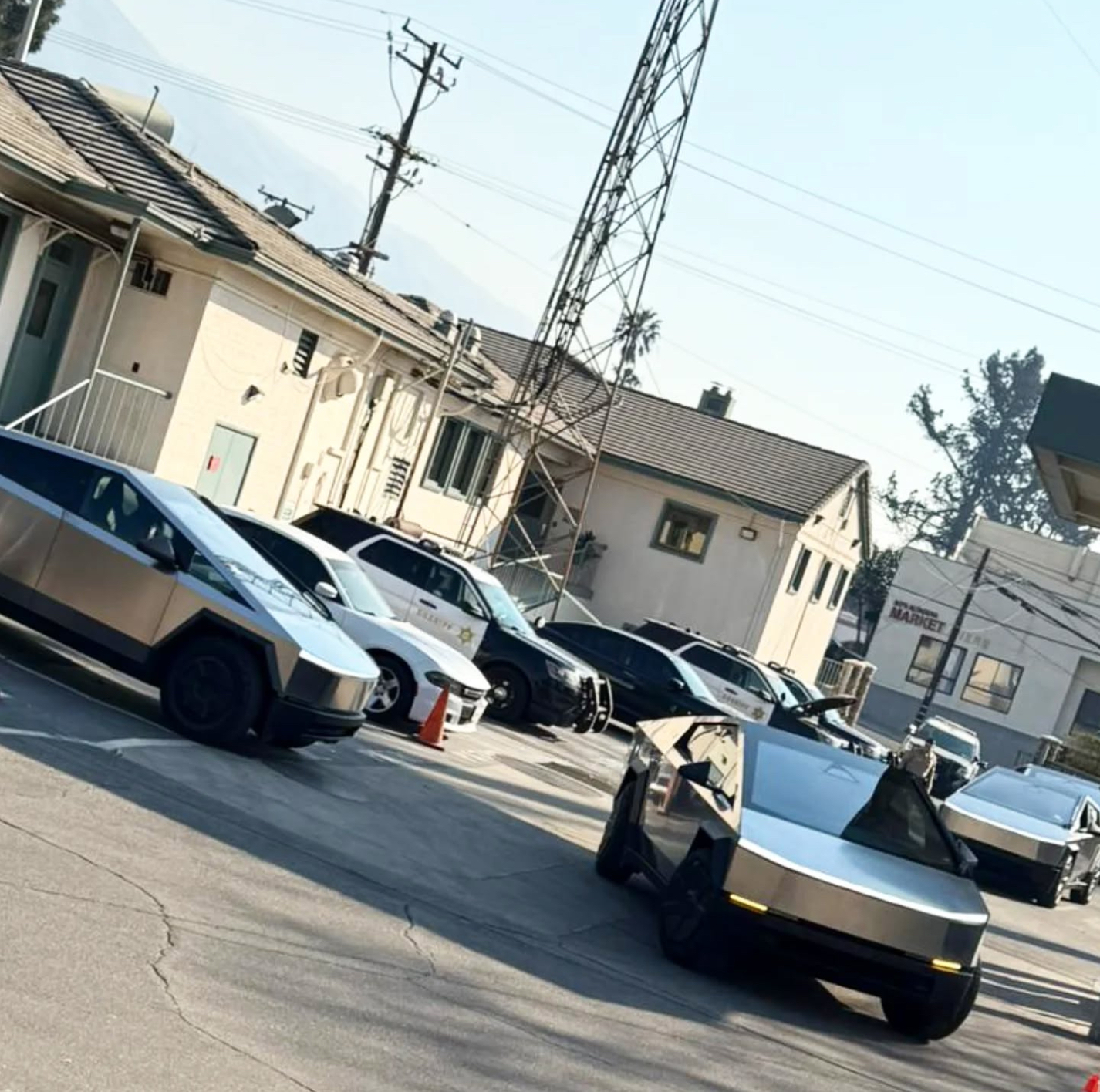
Tesla also outlined the Altadena Cybertrucks and a wide range of other things it’s doing in a post on X on Sunday, including mobile Megapack charging stations and Powerwalls for Starlink:
Summary of efforts Tesla has done to support employees & communities impacted by the LA fires
Impacted employees (home lost or destroyed by fires) We’re covering housing accommodations & supporting employees with transportation & meals.
Superchargers
All our Supercharger sites are back online, except Pasadena Supercharger, which was in the middle of the fire.
Megapack Chargers (MPCs)
2 units deployed Friday 1/10 to relieve congestion in Thousand Oaks for evacuation & families losing power due to Public Safety Power Shutoffs (PSPS).
1 unit deployed Saturday 1/11 in Altadena at the Sheriff’s Station for first responder support, providing power & Starlink connectivity. It’s located within their closed perimeter with utility power currently down.
2 mobile switchgear units with step down transformers that enable an MPC to support powering up 208V buildings (vs only 480V) & more utility than charging up EVs.
2 units in San Bernadino
We’re also working on deploying units in the Palisades directly
Mobile Powerwall Units (MPUs)
Deployed with support from 3rd party non-profits in Altadena & Topenga Canyon with Starlink & power for devices & fridges.
Cybertrucks (all with Starlinks installed)
3 Cybertrucks are now located at Los Angeles Sheriff’s Department in Altadena (+ bed filled with water & snacks) 2 in Pasadena 3 in Zuma Beach & Malibu
Mobile Superchargers powered by Megapacks deployed at Thousand Oaks, CA – West Hillcrest Drive Supercharger.
- Up to 16 stalls at 250kW
- Free Wi-Fi for anyone through Starlink
- Charging available for all EVs
- We’re monitoring where else they’re safe to deploy and helpful.
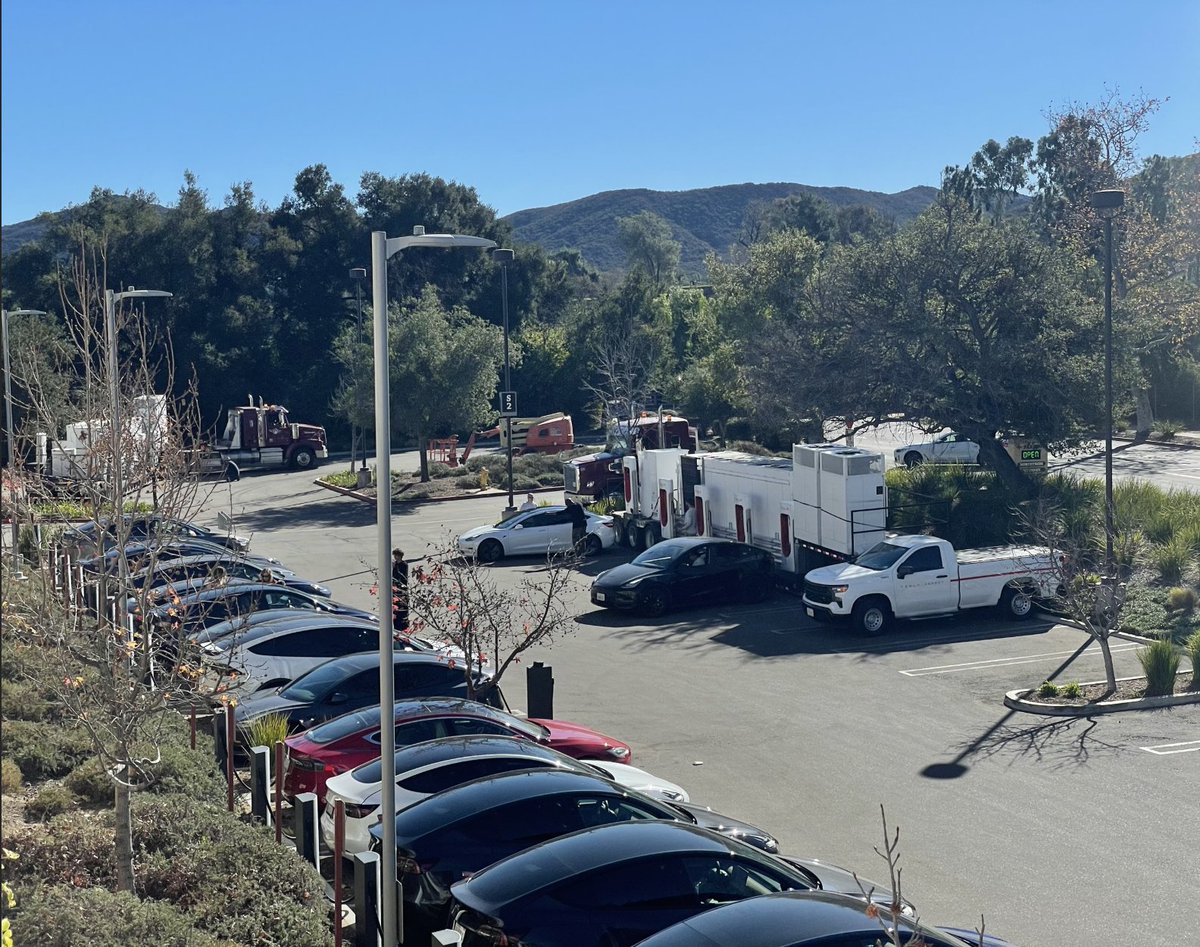
Credit: Tesla | X
MegapackCharger deployed at Altadena Sheriff’s Station for power & connectivity
Credit: Tesla | X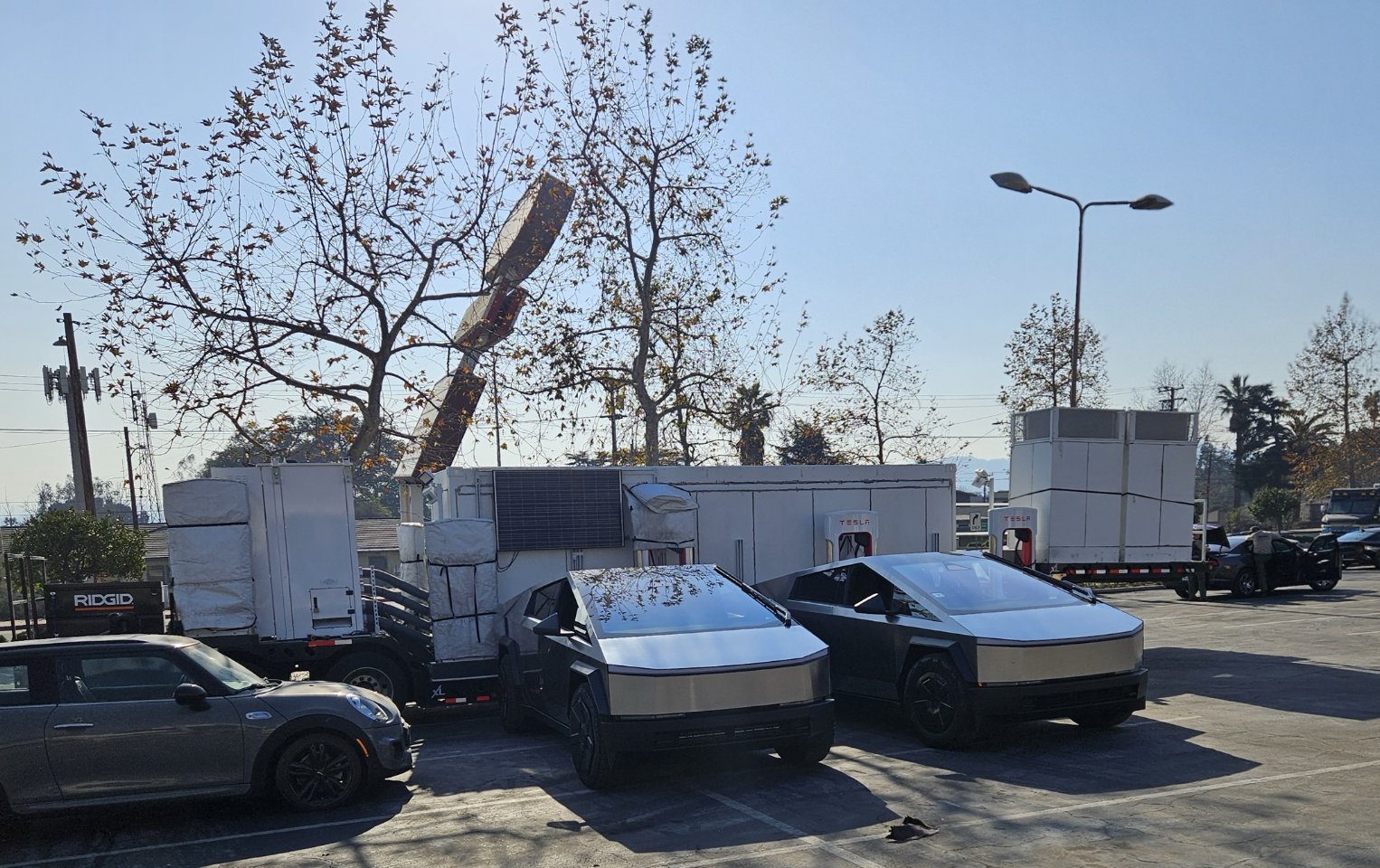
MPUs in Topenga Canyon + team installing them
Credit: Tesla | X Credit: Tesla | X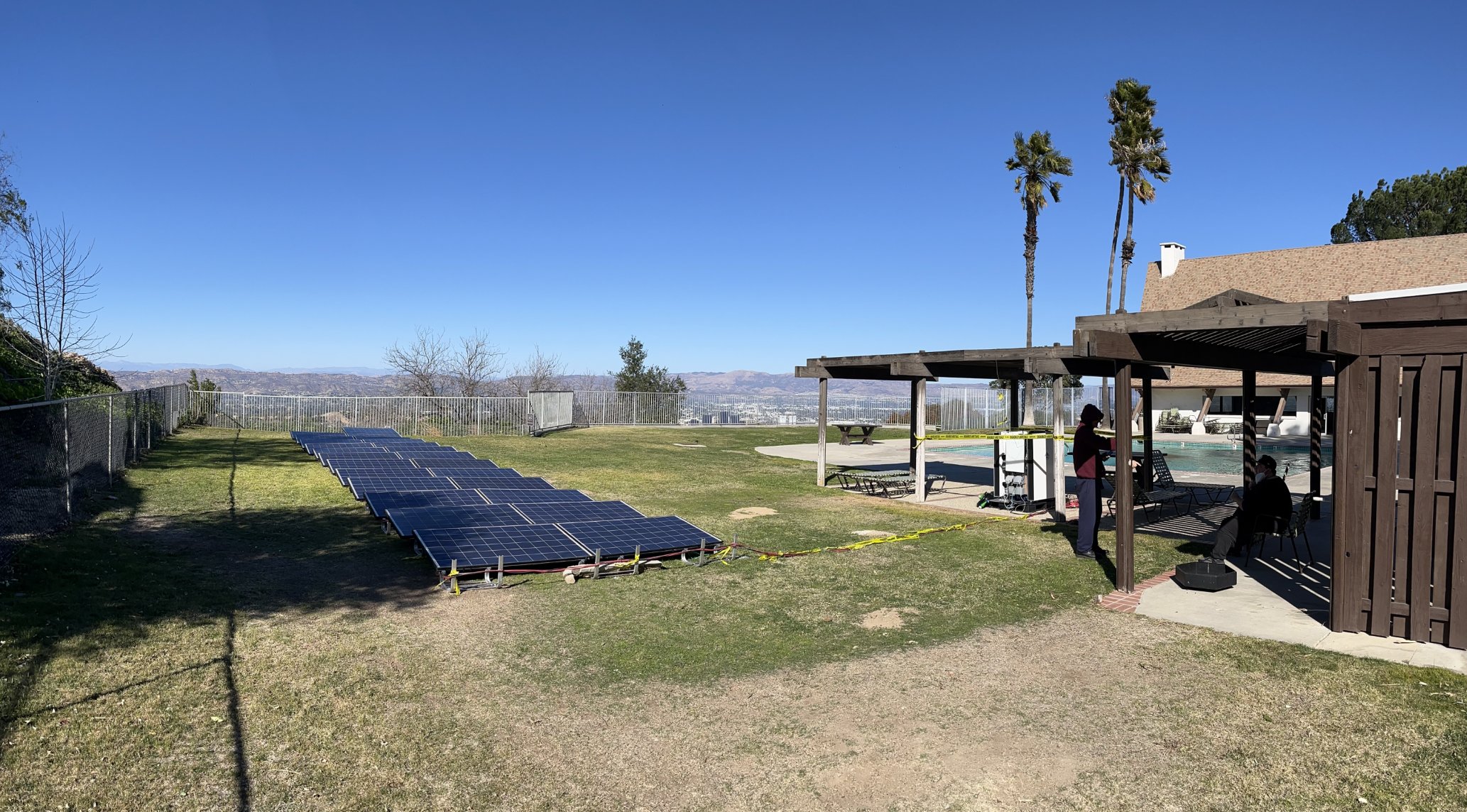
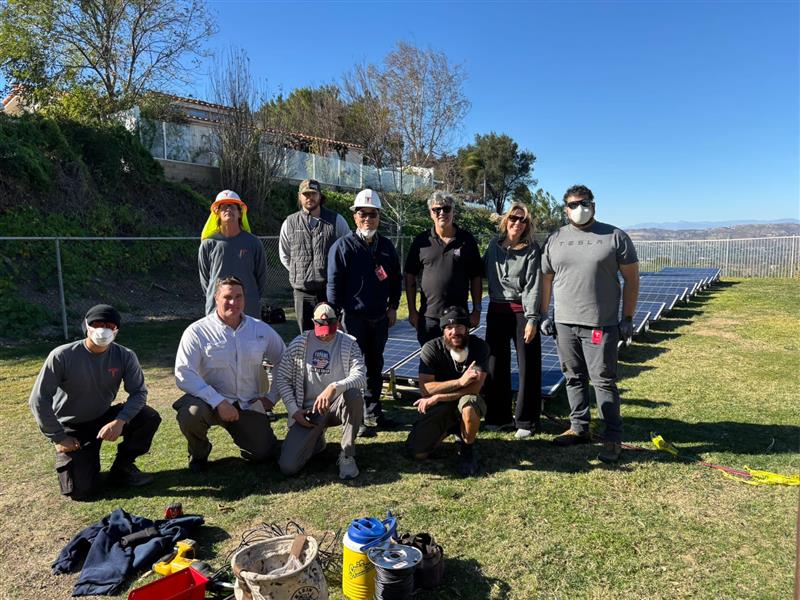
Cybertrucks at Altadena Sheriff’s Station
Credit: Tesla | X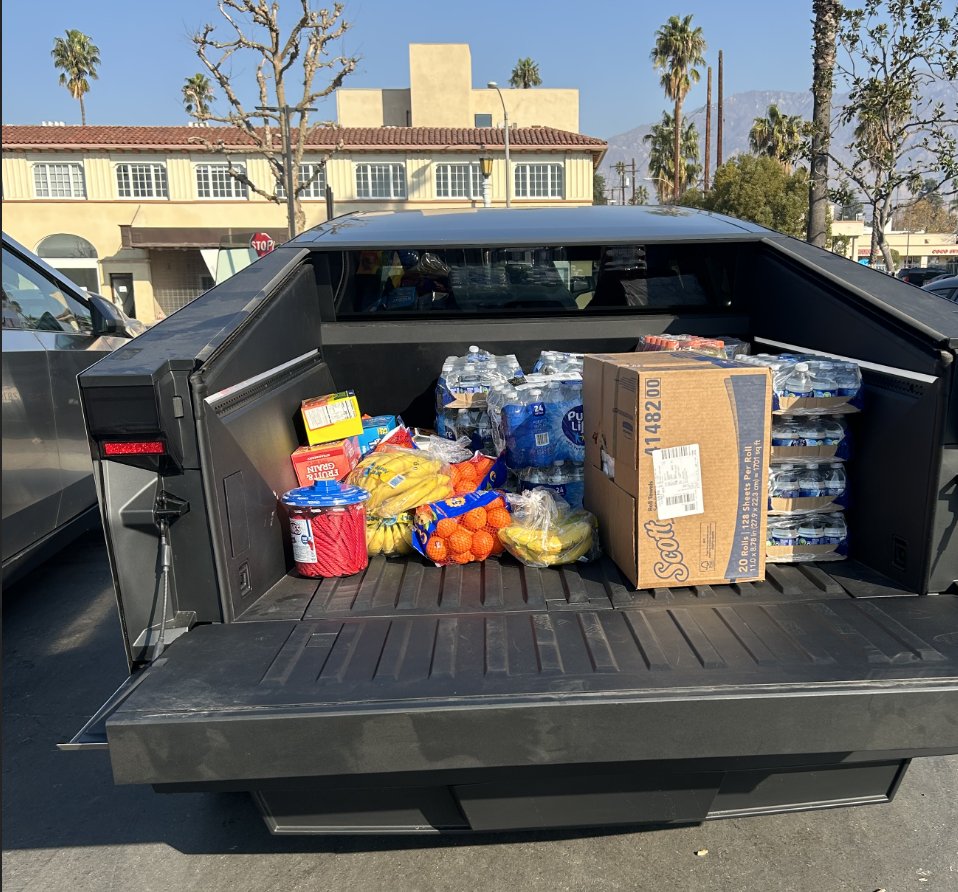
READ MORE ON TESLA CYBERTRUCK CLIMATE DISASTER RELIEF: Tesla Cybertruck owners share insights after Hurricane Helene encounter
Tesla forgives Autopilot and FSD Supervised strikes in California for those evacuating
On Thursday, Tesla’s North America account on X also posted about one of the company’s relief initiatives, officially announcing that it would forgive all Autopilot and Supervised Full-Self Driving (FSD) strikes in the state of California to help aid those evacuating.
“To support people evacuating from the fires in the LA area, all Autopilot & FSD Supervised strikes are being forgiven in the state of California,” Tesla wrote in the post.
One Tesla owner shares Cybertruck Powershare experience
Along with Tesla’s fire relief efforts, one Cybertruck owner has shared an experience using the electric vehicle (EV) to keep a household powered during outages using Powershare—not unlike how it was used by the Altadena Mountain Rescue team.
In the post on the Cybertruck Owner’s Club forum on Wednesday, the user located in Orange County described using the Cybertruck’s Powershare to keep his household with electricity, saying that he had used about 25 miles of range from the EV about six hours into using it. As can be seen in the user’s screenshot of the Tesla app, the vehicle shows 202 miles of range remaining, saying that it still has over a day’s worth of energy.
Credit: MilliM | Cybertruck Owner’s Club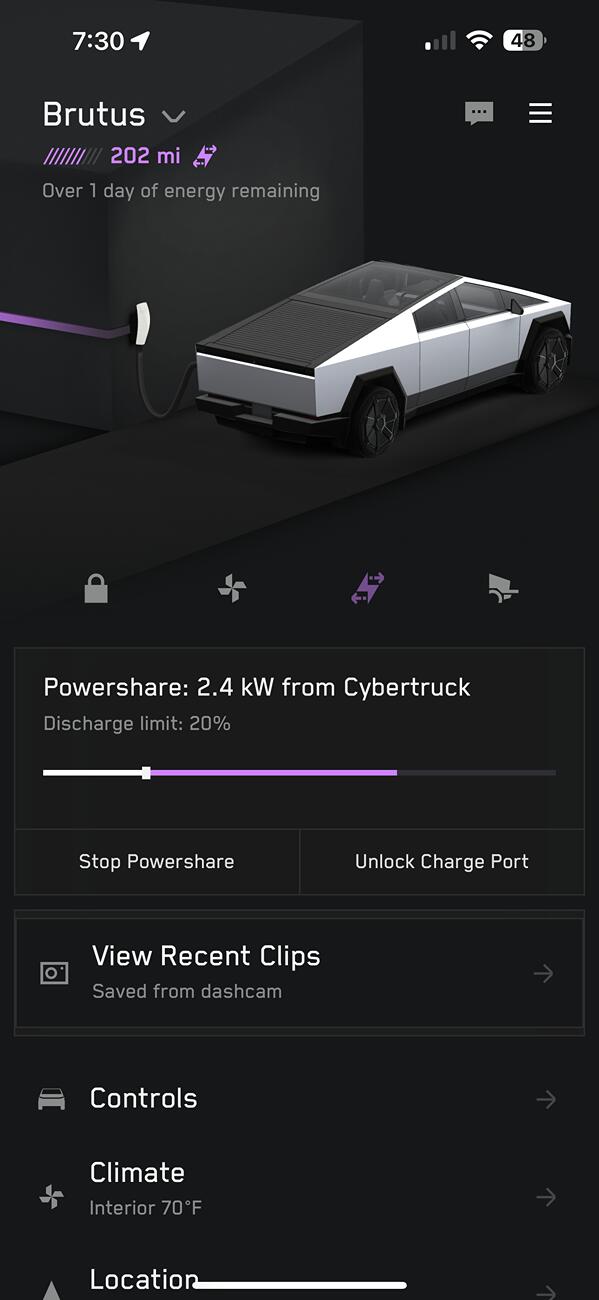
What are your thoughts? Were you or someone you know affected by the fires and used one or more of Tesla’s products to help with evacuation or power outages? Let me know at zach@teslarati.com, find me on X at @zacharyvisconti, or send us tips at tips@teslarati.com.
FEMA deploys Starlink in North Carolina for disaster relief operations
Need accessories for your Tesla? Check out the Teslarati Marketplace:

Elon Musk
Tesla CEO Elon Musk confirms Robotaxi safety monitor removal in Austin: here’s when
Musk has made the claim about removing Safety Monitors from Tesla Robotaxi vehicles in Austin three times this year, once in September, once in October, and once in November.
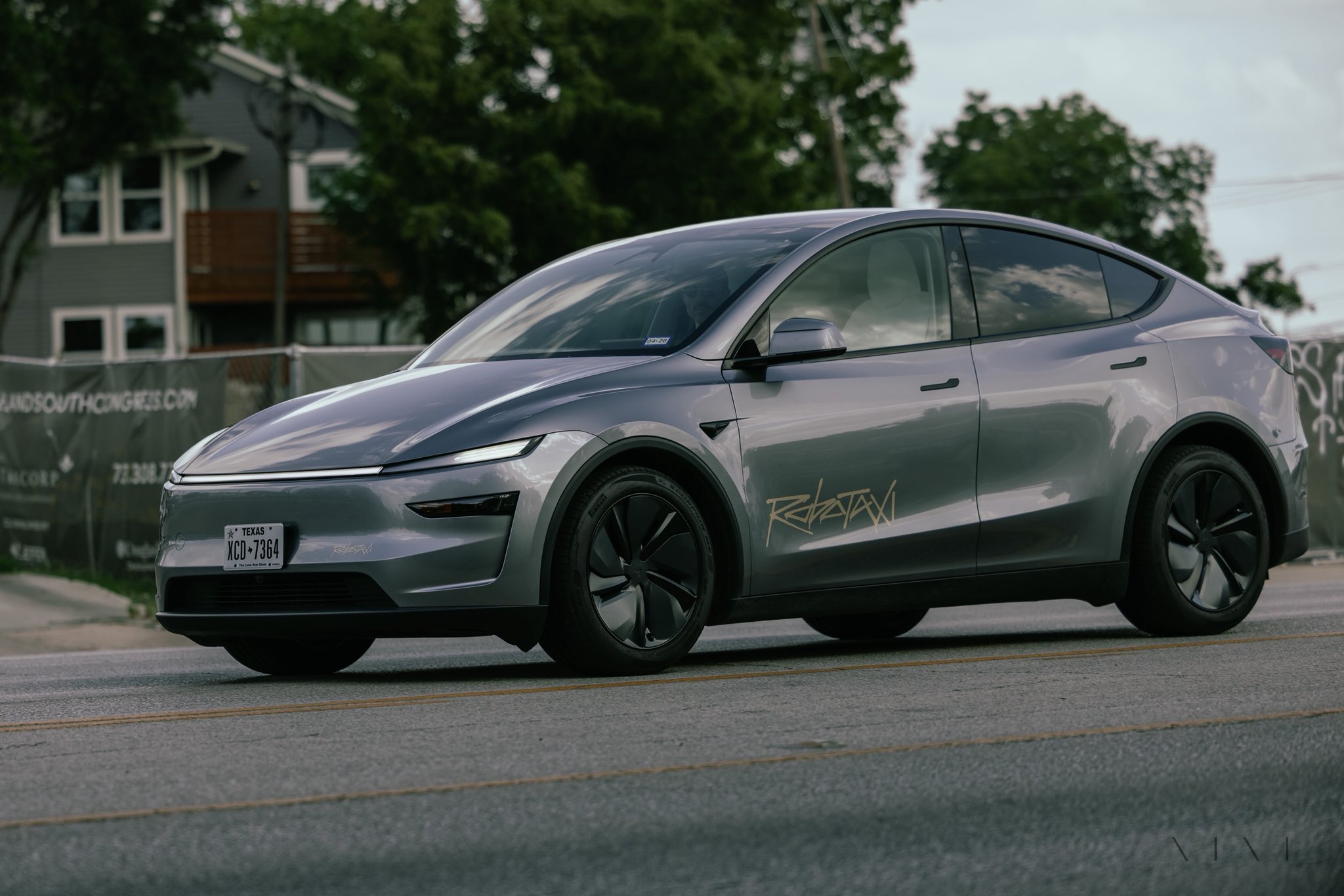
Tesla CEO Elon Musk confirmed on Tuesday at the xAI Hackathon that the company would be removing Safety Monitors from Robotaxis in Austin in just three weeks.
This would meet Musk’s timeline from earlier this year, as he has said on several occasions that Tesla Robotaxis would have no supervision in Austin by the end of 2025.
On Tuesday, Musk said:
“Unsupervised is pretty much solved at this point. So there will be Tesla Robotaxis operating in Austin with no one in them. Not even anyone in the passenger seat in about three weeks.”
Musk has made the claim about removing Safety Monitors from Tesla Robotaxi vehicles in Austin three times this year, once in September, once in October, and once in November.
In September, he said:
“Should be no safety driver by end of year.”
The safety driver is just there for the first few months to be extra safe.
Should be no safety driver by end of year.
— Elon Musk (@elonmusk) September 4, 2025
On the Q3 Earnings Call in October, he said:
“We are expecting ot have no safety drivers in at least large parts of Austin by the end of this year.”
Finally, in November, he reiterated the timeline in a public statement at the Shareholder Meeting:
“I expect Robotaxis to operate without safety drivers in large parts of Austin this year.”
Currently, Tesla uses Safety Monitors in Austin in the passenger’s seat on local roads. They will sit in the driver’s seat for highway routes. In the Bay Area ride-hailing operation, there is always a Safety Monitor in the driver’s seat.
Three weeks would deliver on the end-of-year promise, cutting it close, beating it by just two days. However, it would be a tremendous leap forward in the Robotaxi program, and would shut the mouths of many skeptics who state the current iteration is no different than having an Uber.
Tesla has also expanded its Robotaxi fleet this year, but the company has not given exact figures. Once it expands its fleet, even more progress will be made in Tesla’s self-driving efforts.
News
SpaceX reportedly mulling IPO, eyeing largest of all time: report
“I do want to try to figure out some way for Tesla shareholders to participate in SpaceX. I’ve been giving a lot of thought to how to give people access to SpaceX stock,” Musk said.
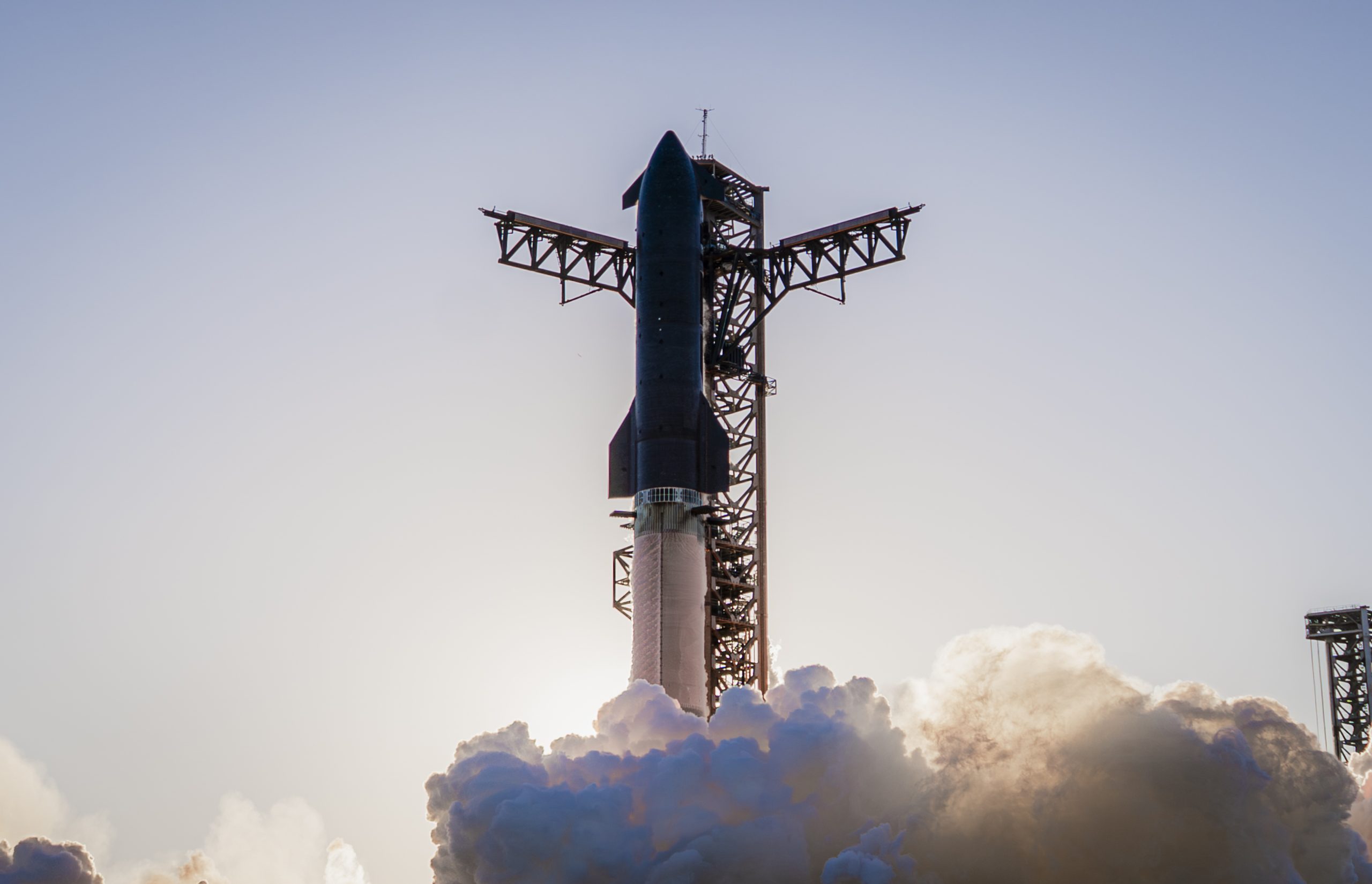
SpaceX is reportedly mulling an initial public offering, eyeing what would be the largest valuation at the time of availability of all time, a new report from Bloomberg said on Tuesday.
It is one of many reports involving one of Elon Musk’s companies and a massive market move, as this is not the first time we have seen reports of an IPO by SpaceX. Musk himself has also dispelled other reports in the past of a similar nature, including an xAI funding round.
SpaceX and Musk have yet to comment on the report. In the past, untrue reports were promptly replied to by the CEO; this has not yet gained any response, which is a good sign in terms of credibility.
However, he said just a few days ago that stories of this nature are inaccurate:
“There has been a lot of press claiming SpaceX is raising money at $800B, which is not accurate. SpaceX has been cash flow positive for many years and does periodic stock buybacks twice a year to provide liquidity for employees and investors. Valuation increments are a function of progress with Starship and Starlink and securing global direct-to-cell spectrum that greatly increases our addressable market. And one other thing that is arguably most significant by far.”
There has been a lot of press claiming @SpaceX is raising money at $800B, which is not accurate.
SpaceX has been cash flow positive for many years and does periodic stock buybacks twice a year to provide liquidity for employees and investors.
Valuation increments are a…
— Elon Musk (@elonmusk) December 6, 2025
Musk has discussed a potential IPO for SpaceX in recent months, as the November 6 shareholder meeting, as he commented on the “downsides” of having a public company, like litigation exposure, quarterly reporting pressures, and other inconveniences.
Nevertheless, Musk has also said he wants there to be a way for Tesla shareholders to get in on the action. At the meeting in early November, he said:
“I do want to try to figure out some way for Tesla shareholders to participate in SpaceX. I’ve been giving a lot of thought to how to give people access to SpaceX stock.”
Additionally, he added:
“Maybe at some point., SpaceX should become a public company despite all the downsides of being public.”
Musk has been historically reluctant to take SpaceX public, at times stating it could become a barrier to colonizing Mars. That does not mean it will not happen.
Bloomberg’s report cites multiple unidentified sources who are familiar with the matter. They indicate to the publication that SpaceX wants to go public in mid-to-late 2026, and it wants to raise $30 billion at a valuation of around $1.5 trillion.
This is not the first time SpaceX has discussed an IPO; we reported on it nine years ago. We hope it is true, as the community has spoken for a long time about having access to SpaceX stock. Legendary investor Ron Baron is one of the lucky few to be a SpaceX investor, and said it, along with Tesla, is a “lifetime investment.”
Tesla bull Ron Baron reveals $100M SpaceX investment, sees 3-5x return on TSLA
The primary driver of SpaceX’s value is Starlink, the company’s satellite internet service. Starlink contributes 60-70 percent of SpaceX’s revenue, meaning it is the primary value engine. Launch services, like Falcon 9 contracts, and the development of Starship, also play supporting roles.
News
SpaceX reaches incredible milestone with Starlink program

SpaceX reached an incredible milestone with its Starlink program with a launch last night, as the 3,000th satellite of the year was launched into low Earth orbit.
On Monday, SpaceX also achieved its 32nd flight with a single Falcon 9 rocket from NASA’s Kennedy Space Center.
The mission was Starlink 6-92, and it utilized the Falcon 9 B1067 for the 32nd time this year, the most-used Falcon booster. The flight delivered SpaceX’s 3000th Starlink satellite of the year, a massive achievement.
There were 29 Starlink satellites launched and deployed into LEO during this particular mission:
Falcon 9 launches 29 @Starlink satellites from Florida pic.twitter.com/utKrXjHzPN
— SpaceX (@SpaceX) December 9, 2025
SpaceX has a current goal of certifying its Falcon boosters for 40 missions apiece, according to Spaceflight Now.
The flight was the 350th orbital launch from the nearby SLC-40, and the 3,000 satellites that have been successfully launched this year continue to contribute to the company’s goal of having 12,000 satellites contributing to global internet coverage.
There are over five million users of Starlink, the latest data shows.
Following the launch and stage separation, the Falcon 9 booster completed its mission with a perfect landing on the ‘Just Read the Instructions’ droneship.
The mission was the 575th overall Falcon 9 launch, highlighting SpaceX’s operational tempo, which continues to be accelerated. The company averages two missions per week, and underscores CEO Elon Musk’s vision of a multi-planetary future, where reliable connectivity is crucial for remote work, education, and emergency response.
As Starlink expands and works toward that elusive and crucial 12,000 satellite goal, missions like 6-92 pave the way for innovations in telecommunications and enable more internet access to people across the globe.
With regulatory approvals in over 100 countries and millions of current subscribers, SpaceX continues to democratize space, proving that reusability is not just feasible, but it’s also revolutionary.
